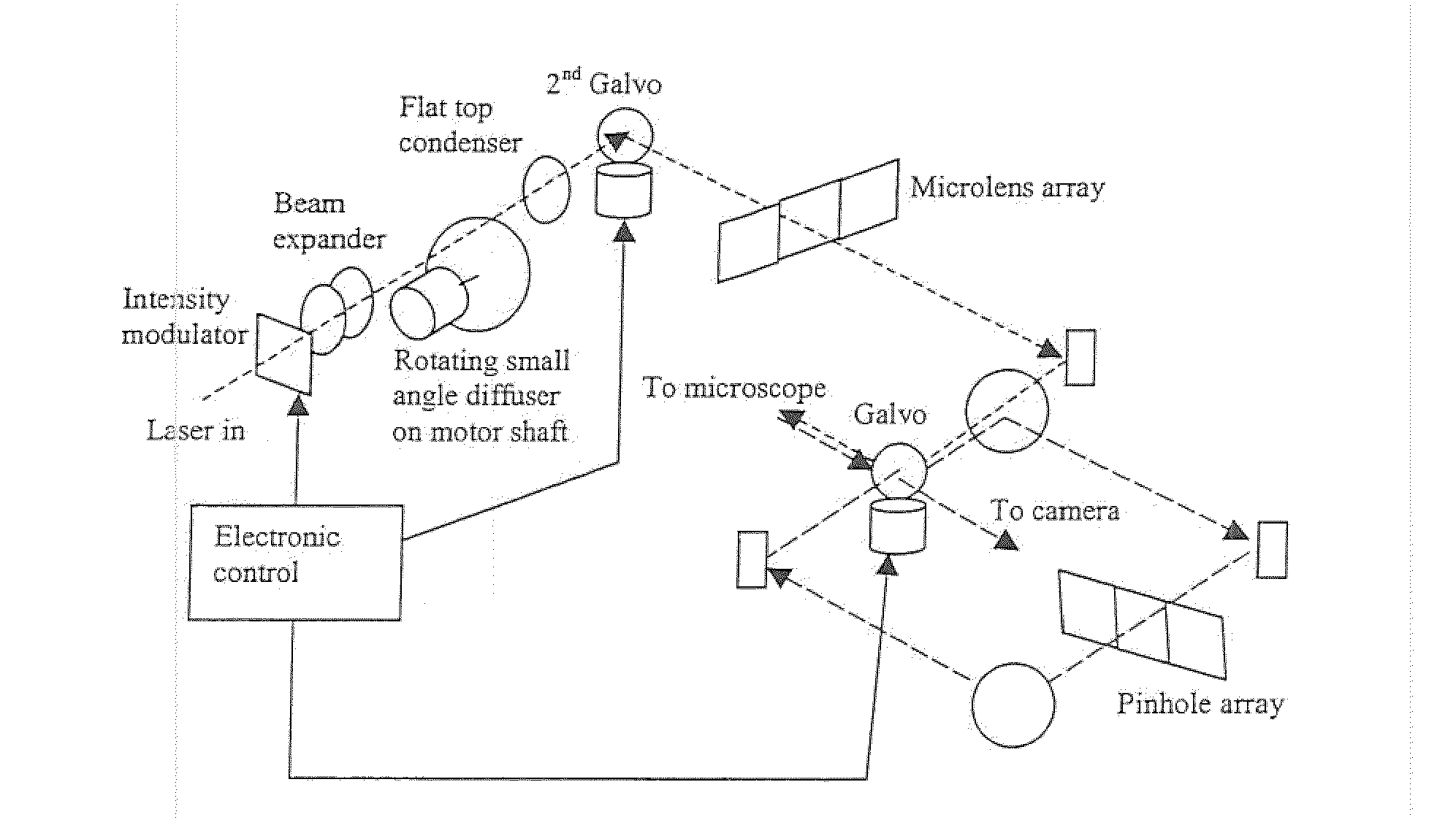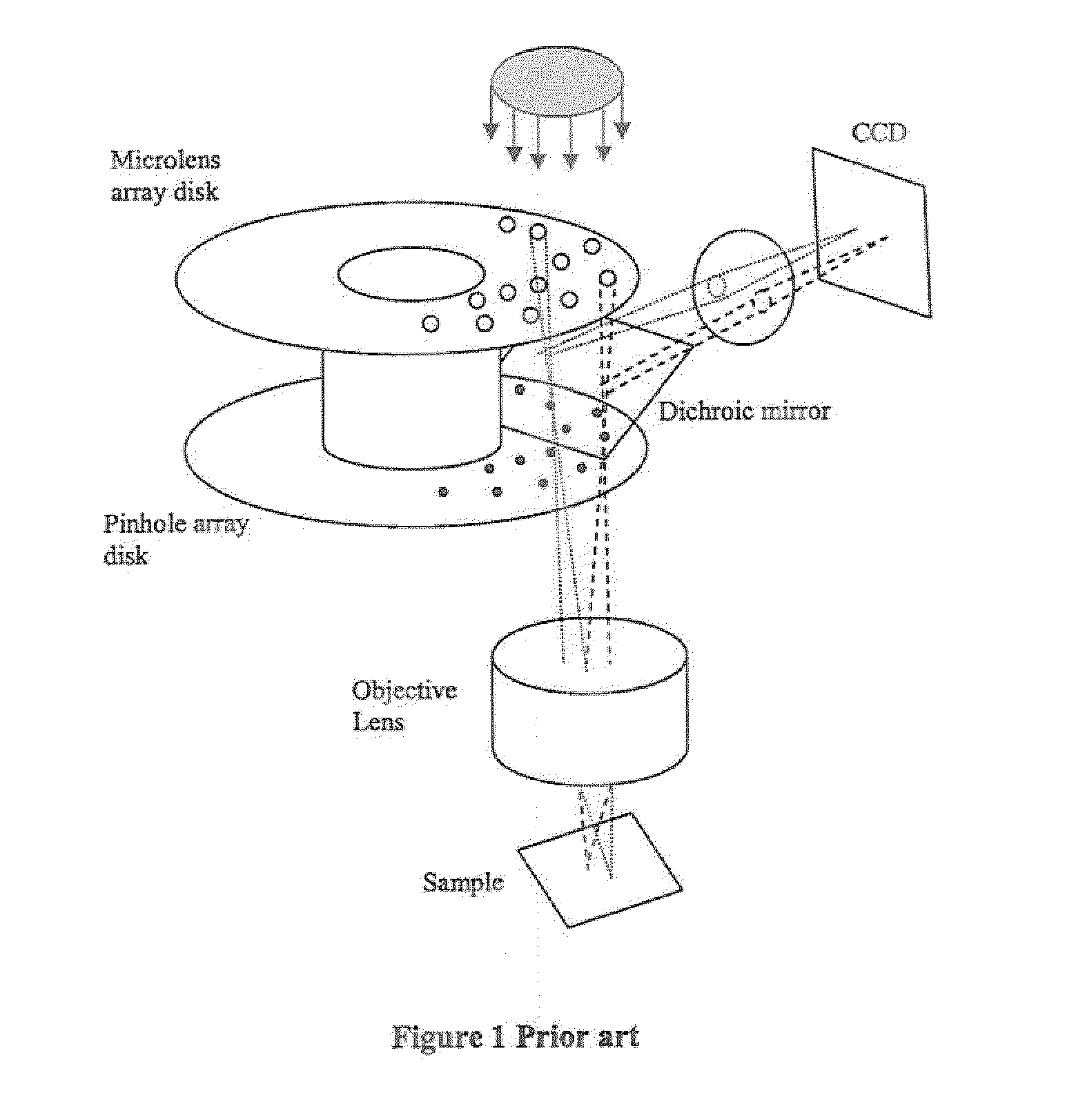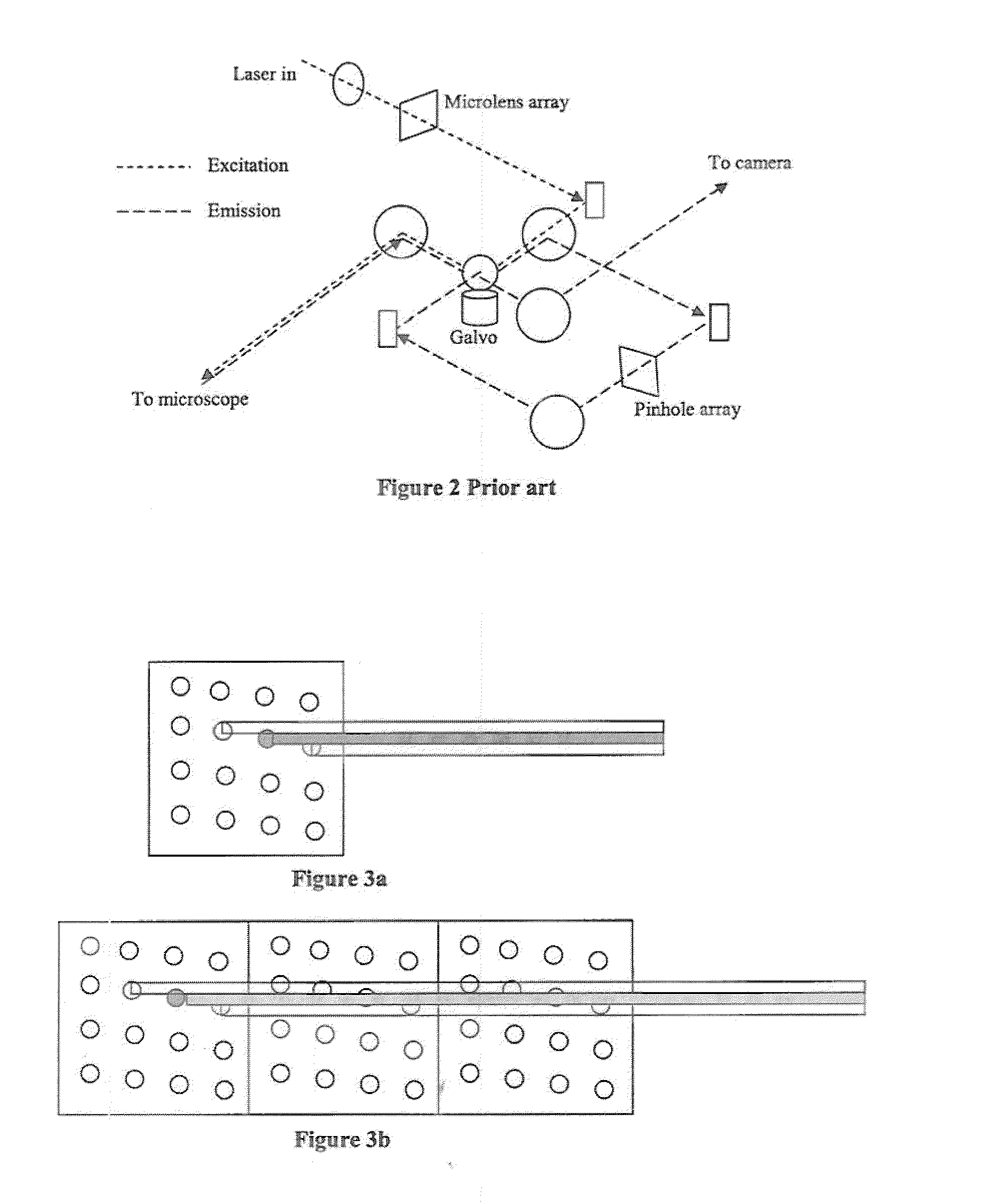Laser confocal scanning microscope and methods of improving image quality in such microscope
a scanning microscope and laser confocal technology, applied in the field of laser confocal scanning microscope and methods of improving image quality in such microscopes, can solve the problems of reducing the overall efficiency of the system by half, random striping, and complicating the production of such configurations, so as to reduce striping and reduce striping. , the effect of increasing throughpu
- Summary
- Abstract
- Description
- Claims
- Application Information
AI Technical Summary
Benefits of technology
Problems solved by technology
Method used
Image
Examples
Embodiment Construction
[0036]Preferred embodiments of the present invention are now described by reference to the drawing.
[0037]A first feature overcomes the lower throughput efficiency and reduces the random ‘striping’ due to imperfections in the microlens or aperture arrays of a 2-D array laser confocal scanner 10. This design requires additional scan patterns to be incorporated into a microlens array 12 and scanned by a galvanometer mirror 14 coupled to a motor 15 and a control 16. These additional repeat patterns along the axis of the scanning direction permit the scanning process to scan across the sample without the ‘dead’ time inherent in the original design. The patterns are arranged such that the patterns at each end of the array are fully superimposed over the field of view when the galvanometer mirror changes its scan direction. Thus it becomes possible to continuously illuminate the sample during the scanning process, without ‘dead’ time (compare FIG. 4 and FIG. 5a).
[0038]With continuous illum...
PUM
 Login to View More
Login to View More Abstract
Description
Claims
Application Information
 Login to View More
Login to View More - R&D
- Intellectual Property
- Life Sciences
- Materials
- Tech Scout
- Unparalleled Data Quality
- Higher Quality Content
- 60% Fewer Hallucinations
Browse by: Latest US Patents, China's latest patents, Technical Efficacy Thesaurus, Application Domain, Technology Topic, Popular Technical Reports.
© 2025 PatSnap. All rights reserved.Legal|Privacy policy|Modern Slavery Act Transparency Statement|Sitemap|About US| Contact US: help@patsnap.com



